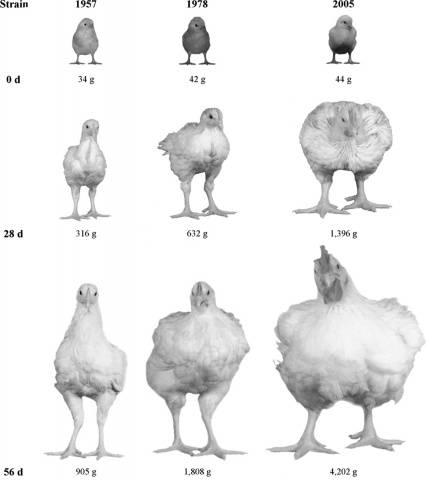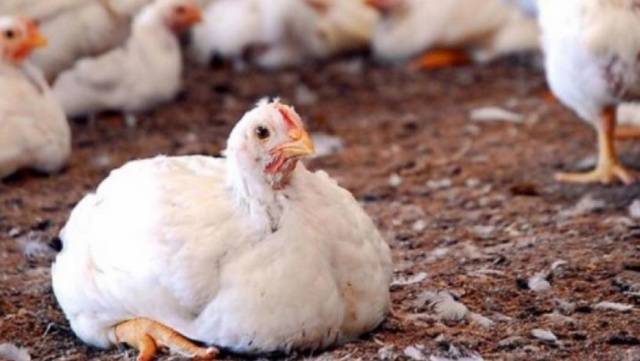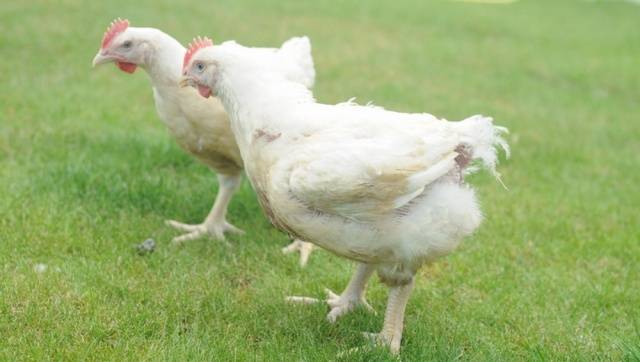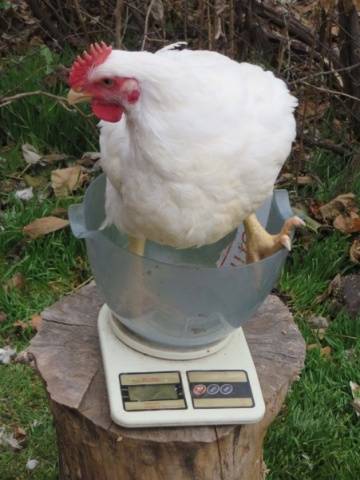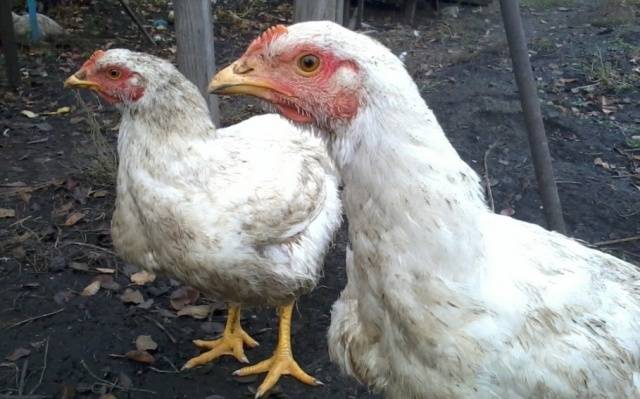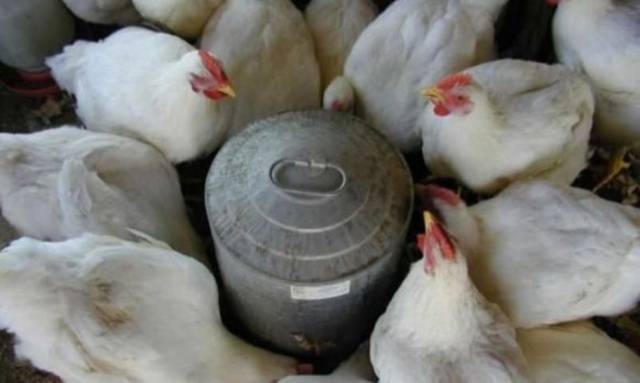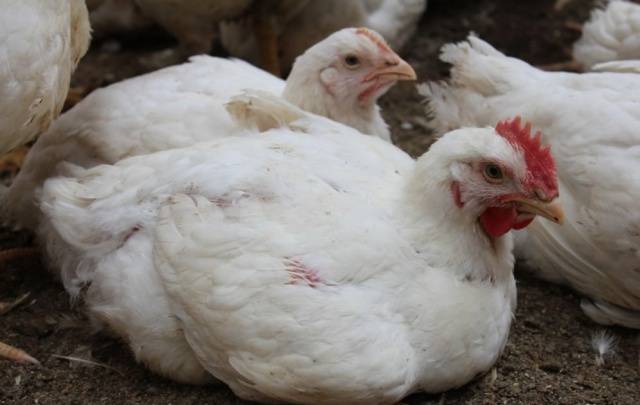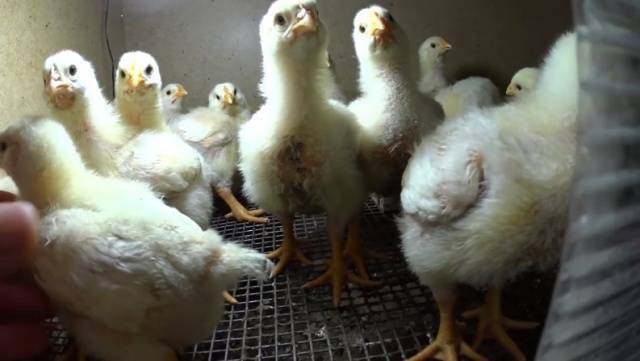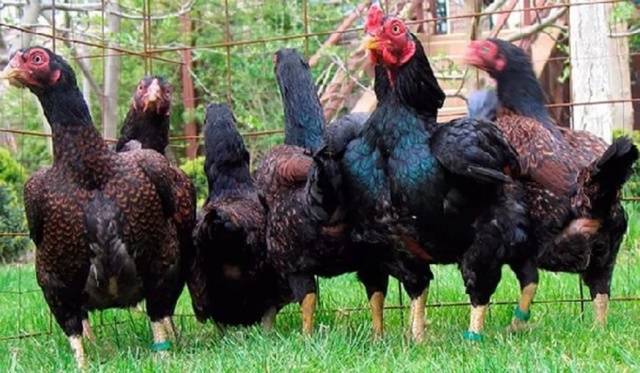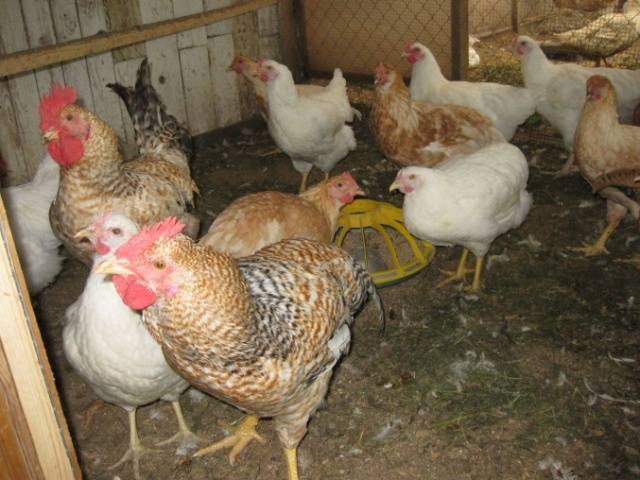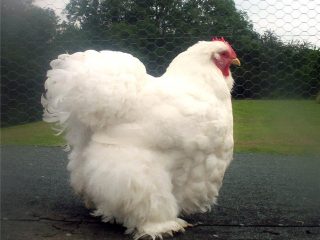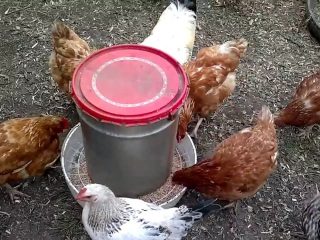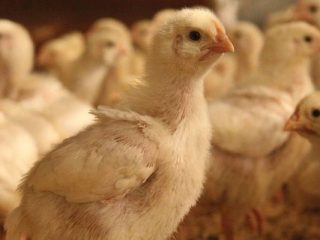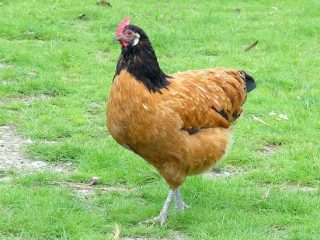Content
Since the Paleolithic era, humanity has been worried about two main thoughts, one of which is: "who can be eaten." With the development of science and understanding of the process of heterosis, it became possible to obtain very large animals with rapid weight gain. Broiler chickens are the pioneers in accelerating animal protein production.
Broiler is not just chicken. This is an animal capable of gaining weight very quickly. The meat of a young animal is softer, tastier and more convenient for frying. From English to broil - "fry" and comes the name of all broiler crosses.
Today, not only broiler chickens have been bred, but also rabbits, bulls, ducks, guinea fowl, geese. All broiler crosses are characterized by the ability to quickly gain weight.
Origin
The first broilers appeared by chance as a result of the crossing by English farmers of two breeds of meat chickens, far from a common ancestor. The resulting chicks suddenly grew very large. At first they were considered a new breed and called the Giants. But when trying to breed Giants "in themselves" the results were disappointing: the offspring lost useful qualities.
By poking, they found out that broiler chickens are not a breed, but a hybrid of unrelated chicken breeds. It is desirable that the parental forms of chickens are of the meat direction, but sometimes even this is not required. After it became clear that by crossing two or more different breeds of chickens, you can get a larger bird, work began on breeding broiler crosses.
Taking into account the selection work aimed at gaining as much weight as possible in the shortest possible time, the size of broiler chicks has increased more than 4 times over a period of 50 years.
This "rapid" change in the size of broiler chickens causes an almost superstitious fear in people new to biology and artificial selection, and gives rise to various myths. Those who have an idea of breeding, on the contrary, ask themselves the question "where to buy broilers and which breed of broiler chickens is better."
It's easier when communicating than constantly clarifying that it is a hybrid or cross.
Why don't they grow
The source of the myths that in factories broiler chickens are stuffed with steroids was the inability to grow a broiler with the declared characteristics in a private backyard. More precisely, it is possible to grow a full-fledged broiler chicken, but many factors must coincide:
- air temperature;
- high-quality compound feed;
- no worms, coccidia or infections in chickens.
All factors together in a private house are almost impossible to comply with, and buyers of broiler chickens have a legitimate question: "If in the description of the broiler chicken breed it is said that at 2 months a chicken should weigh 4 kg, and I have only 2, then why?" Probably the factory is feeding on steroids.
No, they don't. But at low temperatures, the growth of broiler chicks is greatly slowed down. With a lack of nutrients in the feed ("I only have natural feed"), the broiler gains muscle mass very slowly. When infested with parasites or infections, the development of broiler chicks is greatly slowed down or stopped altogether. That's all the factory "steroids" that are called "compliance with the conditions for growing broiler chickens."
Antibiotics and coccidiostatics are given to prevent disease in broilers.Long-acting antibiotics are cleared from the body after a week. It is enough to stop giving the antibiotic to broiler chickens a week and a half before slaughter in order to get clean meat at the exit.
What to choose
There is an opinion that the broiler can only be white. The carcass of a white chicken looks more attractive to the buyer due to the absence of dark hemp from feathers in the skin. Industrial birds are indeed all white in color. They are also considered the best breeds of broiler chickens when it comes to growing poultry for meat:
- "Change";
- Broiler-M;
- "Gibro-6";
- Broiler-61;
- Cobb-500;
- Ross-308.
Usually on the sites these breeds of broiler chickens are presented with photos and descriptions, but photos in this case will not help even a specialist, since white broilers look almost the same in physique. Commercial poultry have different production characteristics, which distinguish one cross from another when describing a broiler.
General characteristics:
- fast weight gain;
- wide fleshy chest;
- fleshy thighs;
- strong legs wide apart;
- readiness for slaughter at the age of 2 months.
Depending on the type of cross, the ratio between the muscle mass of the chest and legs may vary. There are broiler crosses that emphasize dietary white meat, and there are those with Bush's legs in the first place.
Productive characteristics
Broilers are intended for meat production, but private traders are also interested in the question: are broiler chickens laying. The answer is yes. But their egg production is low, like any meat breed. In addition, after 2 months, the broiler chicken begins to gain fat. Since puberty occurs after 4 months, although the broiler layer can produce rather large eggs, it is difficult for her to "push" them through the oviduct through the deposits of internal fat.
"Change"
The result of crossing two other broiler hybrids: "Gibro-6" and "Broiler-6". Cross has a high growth rate, adding 40g daily. The advantage of "Smena" is the high viability of chickens, the absence of which often suffers from other hybrid varieties.
The temperature in the room where the chickens of this cross are kept should be 3 ° C higher than the outdoor temperature. An adult bird has no such disadvantage. It is hardy enough.
The disadvantage of Smena broilers is their tendency to obesity. Without adequate walking, chicks will have to be placed on a low-calorie diet, and this will lead to a decrease in weight gain. Accordingly, again the myth about steroids will be confirmed.
"Change" can carry up to 140 eggs weighing 60 g each.
"Broiler-M"
This cross gives medium-sized marketable carcasses, convenient for cooking dinner for a small family. They were created on the basis of miniature chickens and red ones from Yerevan. The weight of an already adult rooster is only 3 kg, and hens up to 2.8 kg. But this cross has a good egg production: up to 160 eggs per year with a weight of one egg of 65 g. The hybrid gains weight well, differing not only in high productivity, but also in tasty meat.
The main advantage of the cross is the ability to breed them yourself. But for this, the “Broiler-M” roosters need to be replaced by the “Cornish” roosters.
Due to their small size, the stocking density of broilers per square meter can be increased compared to conventional chickens.
"Gibro-6"
Bred on the basis of two lines of Plymouthrock chickens and two lines of Cornish cocks. This cross does not grow as fast as its "congeners". One and a half months old chickens "Gibro-6" weigh only 1.5 kg. But the "Gibro-6" has a pretty good egg production. You can get 160 eggs from them in 13 months.
The main advantages of "Gibro-6": excellent immunity and undemanding conditions of detention. "Gibro" can live both in cages and free-range, needing only routine vaccination. Their calm nature allows them to get along with other inhabitants of the private courtyard.
"Broiler-61"
The basis was Plymouthrock chickens and Cornish roosters. The 61st gains weight well with low feed intake relative to body weight. At 1.5 months, the weight of this broiler is already 1.8 kg. Egg production in chickens is low.
Positive qualities of "61st" - high survival rate of chickens and rapid weight gain. The latter has a downside, since from 5 weeks of age the chickens of this hybrid have to be limited in food, since otherwise their leg bones cannot withstand. But with a restriction in food, daily weight gain decreases.
"Cobb-500"
Gains mass quickly, but is more suitable for large factories, as it is very demanding on the conditions of detention. Requires strict adherence to growing recommendations and strict health control.
The second and third parties, purchased immediately after the first, of this broiler breed of chickens do not correspond to the description, growing 2 times smaller due to diseases. If they do not die entirely. But this is on condition that the necessary medications are not used.
Ross-308
The producer keeps the parent breeds of this broiler a secret. We can only say that it is unlikely that its origin is fundamentally different from other broiler hybrids and it is probably based on meat and fighting chicken breeds.
Ross is distinguished by good weight gain and economy in feed consumption. The muscle mass of this hybrid is formed at the very beginning of chick development, due to which Ross is ready for slaughter at the age of 1.5 - 2 months. Its weight at this time is already 2.5 kg. Chickens lay up to 180 eggs in the first year.
They are also characterized by a dense build with a wide body. With a massive body, chickens are short.
"Not incubator"
In addition to white industrial broilers, there are also chicken breeds such as the colored broiler in the world. Colored ones are also hybrids of different breeds of chickens, but this is the “first generation of broilers”. That is, it turned out on the basis of crossing pure breeds of chickens. The hybrids already obtained were later used in the development of industrial hybrids. Judging by the photo and description, all colored breeds of broiler chickens are lighter than their "descendants" - industrial hybrids. The exception is the Cornish broiler breed, which is not inferior to the later hybrids in terms of the massiveness of the body.
Cornish
A broiler emerged, thanks to the desire of the British to breed a new fighting breed of chickens. For this, English fighting breeds of chickens were crossed with Malay ones. "Now! - said the hatched offspring, - you need, you and fight. " With attempts to further breed these chickens, the fighting spirit was more and more extinguished in each subsequent generation.
The result is a peaceful but very massive broiler breed of chickens. Broiler chickens weigh 2 kg at two months. They reach a full weight of 4 kg by six months of life.
Obviously, out of annoyance for the lack of fighting qualities, since the "gherkin" is a very small cucumber, not a broiler chicken.
Corniches have retained the outward signs of fighting breeds: a powerful, well-muscled body on strong, short, widely spaced legs. In addition to the relief muscles, the roots also have an average egg production. They can lay up to 140 eggs weighing up to 60 g. Roots have preserved the instinct of incubation, so chickens of this breed can be bred under a brood hen. In this regard, Cornish can be safely called not a hybrid, but already a breed.
Among the Cornish chickens with a white color are widespread, as in the video.
"Tricolor"
Broiler chickens of the Tricolor breed from the photo do not look like broilers at all. But this is a broiler of French origin."Tricolor" really looks lighter than its "fellows in the shop", but in fact they are large chickens. As adults, they weigh up to 5.5 kg. At the age of one month in factories, chickens gain weight up to 1.5 kg. But the broiler "Tricolor" not without reason looks like an egg laying hen: its egg production is up to 300 pieces. eggs per season. To the rapid growth and high egg production, you can also add tasty tender meat and a developed hatching instinct, which allows you to breed these broilers without assistance.
Conclusion
In Russia, the most common variants of broilers are "Cobb". Since most broiler chicken breeds are white, you will have to buy the desired hybrid from the broiler manufacturer. Otherwise, there is no guarantee that when going to buy one breed of broiler, a person will not buy a completely different one. Or, when buying, it is enough just to be sure that these are broiler chicks no matter which line.
